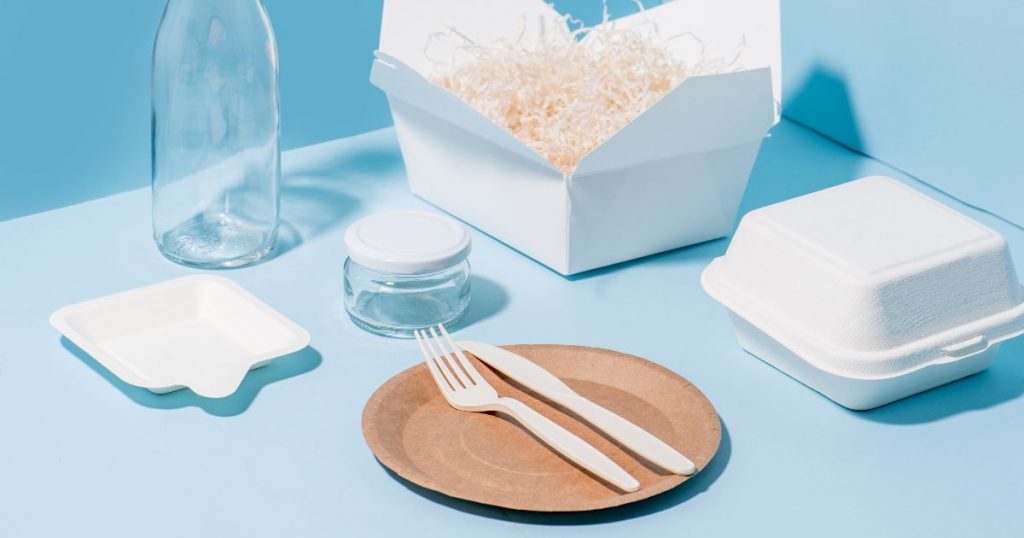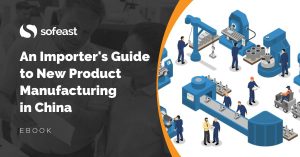As product designers look for more sustainable options to please increasingly environmentally savvy consumers, they are often looking at the advantages of bioplastics, such as lower production CO2 emissions, sustainable raw materials, biodegradability in many cases, and more…
The bioplastic industry is already growing steadily. In fact, between 2019 to 2024, its production capacity is expected to grow by 15% from around 2.1 million tonnes to 2.4 million+, so the demand is clear.
In spite of this strong demand, this only represents around 1% of the 200 million tonnes per year global plastic market. It is gaining in popularity but is still quite marginal.
What’s so special about bioplastics?
Bioplastics are usually:
- Based on organic or plant-based sources instead of oil
- Recyclable, compostable, or biodegradable
- Able to fulfil the same applications as oil-based plastics
The difference is that they do not cause the same level of harm to the environment as their oil-based cousins. For instance, we’ve all heard of the damage that microplastics do to animal life.
If bioplastics don’t affect the environment as harshly, they must be a great alternative. There are many impressive advantages of bioplastics to celebrate, but it’s also important to understand the disadvantages, too.
>> Learn more about bioplastic alternatives (in detail) by reading this white paper <<
Now, let’s say you are designing a new product or wondering how the materials of an existing product can be substituted. Are you ready to consider the use of a material that is not made out of oil?
You need to be aware of the pros and cons, before heading down the road to sourcing, quoting, and prototyping.
Advantages of using more bioplastics
- Less oil is used to produce petrochemical (oil-based) plastics which pose a great risk to the environment.
- The common bioplastics can be injection molded and shaped to take the same form as traditional thermoplastics. In some cases, the bioplastics are stronger and lighter, too, so they are not necessarily only suitable for very niche applications.
- Bioplastics are more marketable, for example, their usage may improve the value-add of a product through a green marketing campaign. After all, studies have shown that ‘80% of European customers want to buy products with a minimal impact on the environment,’ so bioplastics may represent a useful argument for brands.
- Less plastic litter is needed. In the UK, it was found that 90% of litter on beaches was plastic. Using bioplastic alternatives which break down naturally by composting or biodegrading will naturally negate the chance for them to become yet another piece of that 90%.
- Many bioplastic polymers are naturally occurring and don’t have the carbon footprint of oil-based plastics because they don’t require the refinement of oil to produce. The refinement of oil to create the petrochemical building blocks for oil-based plastics uses a lot of energy and releases a lot of CO2 during production, perhaps as much as 500 million tonnes of CO2 per year.
- Common bioplastics, such as starch-based PLA and PHB, are non-toxic and of ‘no health concern’. This makes them useful for food packaging, as they don’t taint food with any taste, nor leech chemicals (e.g. BPAs) like some oil-based plastics.
Disadvantages of bioplastics
- First, bioplastics are generally NOT cost-competitive compared to their oil-based counterparts. They are generally two or three times more expensive than the major conventional plastics such as PE or PET, and their production is plagued by low yields and being expensive. This disadvantage should be less acute when manufacturing plants become larger and benefit from economies of scale. A good example is Braskem’s 200,000-tonne bio polyethylene plant (equivalent to about 20% of the world’s current bioplastics production).
- There is a concern that bioplastics based on terrestrial crops could harm food supplies; however, new innovations using food waste could be helpful in this regard and the concerns would seem to be unfounded as: ‘Perhaps 300,000 hectares are used to grow the crops which the industry processes into plastics. For comparison, this is about 0.02% of the world’s total naturally irrigated area available for cultivation. Even if half the world’s plastics were made from crops grown on food land, the industry would only require 3% of the world’s cultivated acreage.’
- Crop-based bioplastics require fertile land, water, fertilizers, and are reliant on weather conditions. This means that the supply of raw materials for bioplastics are at risk of natural phenomena, such as drought.
- Some bioplastics have a shorter lifetime than oil-based plastics due to weaker mechanical properties; such as greater water vapour permeability than standard plastic, being easy to tear like tissue paper, or being very brittle. For instance, some algae-based bioplastics will break down in a matter of hours when in the water – this makes them very biodegradable, but also fragile.
- Being compostable and biodegradable sounds great, but many bioplastics must follow a specific disposal procedure and require industrial composting in order to avoid being incinerated or going to landfill. If local authorities lack this facility, the ‘green’ bioplastic may end up being disposed of with normal trash and when in landfill do not break down much easier than regular non-biodegradable plastics in some cases.
These alternative materials are a good fit for certain applications and a very bad fit for others. This was a very general introduction.
As I wrote above, you can get our white paper on this topic (no registration required), to go into more depth about this topic, and you can also read about the raw materials that can be used to make bioplastics in this guide, too.
Are you designing, or developing a new product that will be manufactured in China?
Sofeast has created An Importer’s Guide to New Product Manufacturing in China for entrepreneurs, hardware startups, and SMEs which gives you advance warning about the 3 most common pitfalls that can catch you out, and the best practices that the ‘large companies’ follow that YOU can adopt for a successful project.
It includes:
- The 3 deadly mistakes that will hurt your ability to manufacture a new product in China effectively
- Assessing if you’re China-ready
- How to define an informed strategy and a realistic plan
- How to structure your supply chain on a solid foundation
- How to set the right expectations from the start
- How to get the design and engineering right
Just hit the button below to get your copy (please note, this will direct you to my company Sofeast.com):


